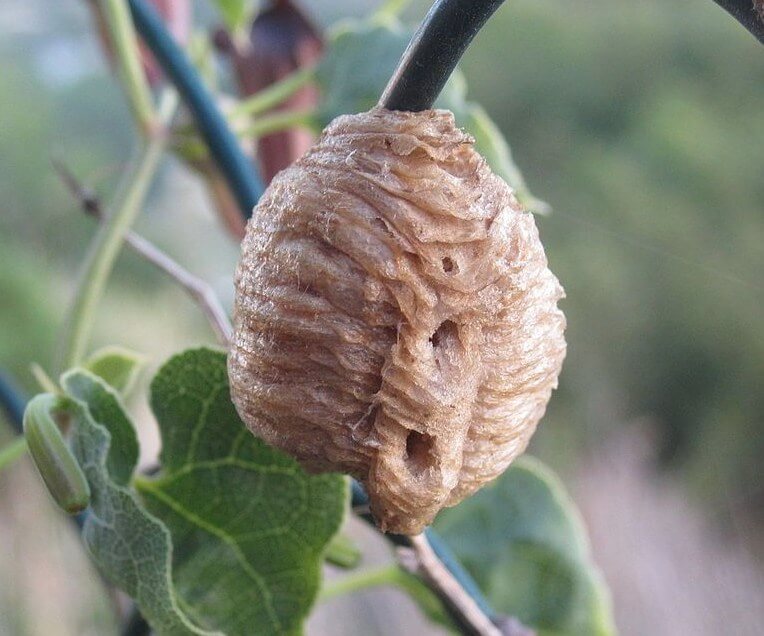Mantid-Magazine
Everything you need to know about an ootheca
The eggs of a praying mantis are caught in a smooth nest that we call an ootheca. “Ootheca” translates to “a place to keep”. Female mantids like to lay their nests on limbs or any uncomplicated surface. An Ootheca is supposed to protect the eggs until the little ones finally hatch. In the beginning, right after the female mantis produced the ootheca it’s really smooth but it gets hard and strong very quickly.

Every mantis has a different color, size or form of their ootheca, but it does not matter whether the ootheca is fertilized or not. Just like hens do, the female mantids produce oothecas anyways. The surface of an ootheca protects the inside against the cold and heat. Some species can have hundrets of eggs inside their ootheca, others only lay a few.

Most kinds of mantids that come from moderate climate zones, lay their ootheca around fall, shortly before mantids die. The building process of an ootheca usually takes place around dawn or at night. The eggs in the ootheca will rest until spring, then the nymphs will hatch and grow up. After that, the cycle begins again.
If a female mantis is producing her ootheca, you should make sure to not disturb her. About 3-5 days after she laid her nest, it will be hard and strong enough to take it out of the terrarium. I recommend you to remove them because the nymphs will need a different environment than an adult one. Another reason for why I’d remove the ootheca from their mother is because she will probably try to eat them.

Personally, I put the ootheca in a separate tank that’s higher than 15cm and wider than 8cm, just to make sure there’s enough space for the young mantids. There are obviously some smaller kinds that need a little less space, but you can probably use these dimensions for all kinds. For the final hatch you should make sure to make enough space (5-10cm at least) to the ground so that the larvas are able to get down on their string and moult for the first time.
The tank should definitely have good air conditioning, either through a net oder enough tiny holes inside the lid and the sides. I always pull tights around a plastic box for that.
I put the ootheca on the inner side on the lid of the box. It should also be facing the same direction as the mother put it in. You can glue them to the lid with double sided tape but you should be careful to cover up all of it because it will kill the mantids as soon as they try to walk on it.
Another way to put it on the lid is to put a needle through the outer ends.
If the mantis laid her ootheca on a limb, it’s the easiest to cut the limb and separate it.
Some ootheca need break over the winter, others don’t. During a winter break the evolving of the eggs will stop because of the low temperatures. Higher temperatures on the other hand will increase it. Species that go through a winter break in nature should also be given one in their tanks, that’s why you should keep them cooler (12-15 degrees) for about 8 weeks. Since tropical species of mantids don’t know any weather seasons, they won’t need the so called “dia pause”
To successfully incubate the eggs of a mantid, you have to make sure to keep the humidity and temperature on a matching niveau. You can get all information around that in my keeping repords.

As soon as the nymphs hatch, they have to be put in a suitable tank.




